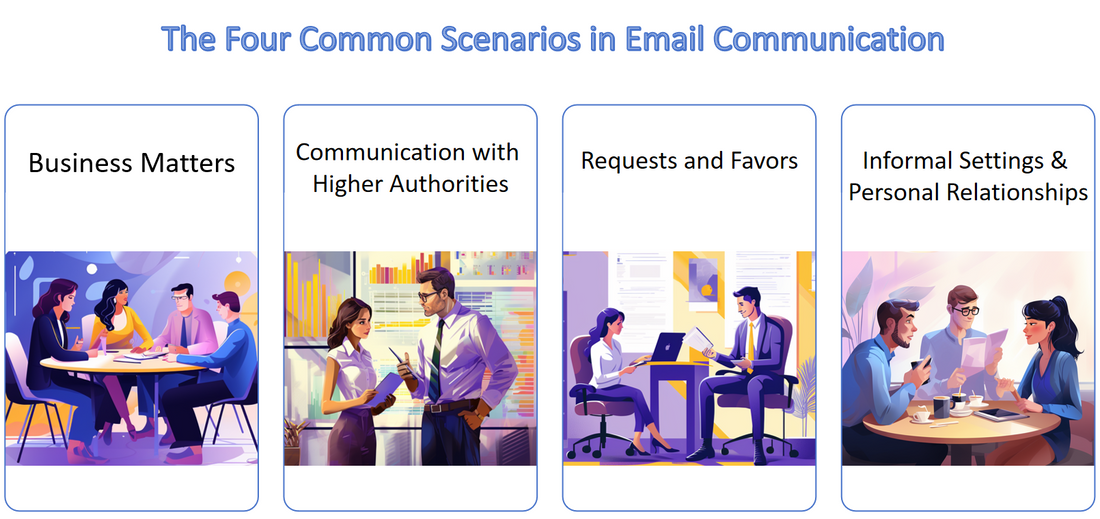Ever pondered why an email to your boss sounds like a formal proclamation, while one to your best friend reads like a laid-back coffee chat? Delving into these subtleties is key to top-notch communication. In this article, we're diving deep into the perplexing world of email formality, deciphering its secrets and unveiling the unspoken rules that govern our online conversations.

Email Formality in Business Matters
In the world of business, crafting emails is akin to painting a masterpiece. Just as artists carefully choose their colors, professionals instinctively don the cloak of formality. It's not just a show; it's the brush that paints trust and respect. Think of formal emails as the well-tailored suits of the corporate world—they set the tone. Like a finely tuned orchestra, structured language ensures our notes hit the right chord, making our message harmonious and clear.
Picture it: a formal email is like a well-folded paper airplane. Its neat edges and clear folds guarantee a smooth flight, reaching the recipient without turbulence. In this digital realm, where attention is a scarce currency, formal language becomes the polite knock on the recipient’s door, indicating that their time and attention are valued.
Just as a great novel leaves no room for misinterpretation, formal language eliminates confusion, paving the way for fruitful exchanges.
Email Formality When Communicating with Higher Authorities
When communicating with individuals of higher rank or authority, it is essential to elevate the level of formality significantly. This heightened formality resembles a refined dance, where each word and gesture acknowledges the recipient's esteemed position. Here are some suggestions:- Respectful Salutations and Polite Language: Utilize courteous greetings such as "Dear Sir/Madam" or "Respected [Name]," emphasizing deference and admiration. These salutations serve as fundamental elements of these interactions, transcending mere protocol. They signify a profound recognition of the recipient's stature.
- Professionalism in Presentation: Ensure professionalism permeates every aspect of the email, including font choice and formatting. Use standard, easy-to-read fonts, and refrain from excessive use of bold or colored text. Meticulously proofread your message to eliminate errors, showcasing your attention to detail.
- Timely Responses: Demonstrate respect for their time by responding promptly to emails from higher-ups. Be mindful of their schedules, refraining from sending emails during non-business hours unless urgent. Clearly mark urgent emails in the subject line, ensuring they receive immediate attention.
Adhering to these guidelines will enhance the effectiveness of your communication with superiors, fostering a respectful and professional rapport.
Email Formality in Requests and favors
When composing emails to ask for help or favors, maintaining a formal tone is vital for clear communication. Politeness and courtesy are crucial elements in these interactions. Here are some user-friendly examples:- "Could you please..." or "I would appreciate it if..." Using these polite phrases shows respect for the recipient's time and willingness to assist. It acknowledges any potential inconvenience and asks for permission before making the request.
- "Would it be possible for you to..." This wording respects the recipient's ability and choice to assist, allowing them to decide comfortably.
- "If it's convenient for you..." This phrase shows consideration for their schedule, understanding their time commitments.
- "Your assistance in this matter would be greatly valued." This expression conveys gratitude in advance and emphasizes the importance of their help.
- "Your support on this matter would be immensely helpful." This statement emphasizes the impact of the recipient's assistance, underscoring its importance. It not only expresses gratitude but also recognizes the value of their involvement.
Using these polite and considerate expressions ensures your requests are clear, respectful, and appreciative, fostering positive communication with your recipients.
Email Formality in Informal Settings and Personal Relationships
In contrast to formal emails, the informal language establishes a comfortable ambiance, making recipients feel cherished, relaxed, and delighted. It creates an atmosphere where individuals can express themselves freely, strengthening the bonds of friendship and family ties. These informal exchanges capture the essence of personal connections, embracing the richness of shared emotions and experiences.

